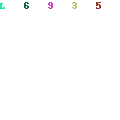JustJazzie
Been spending a lot of time on here!
- Joined
- Jan 21, 2013
- Messages
- 3,793
- Reaction score
- 1,732
- Location
- Bailey, Colorado
- Can others edit my Photos
- Photos OK to edit
I would really like to try and kick my water drop stuff up a notch, but I don't see myself ever spending 500$+ on a timer. Are there any other methods for catching these? Any way to build a timer? My DH is pretty handy in the rigging department so if I found a tutorial or something he could probably figure it out.















![[No title]](/data/xfmg/thumbnail/37/37528-9e874fc2fc9aad7c13c894c1439dcc10.jpg?1734170686)
